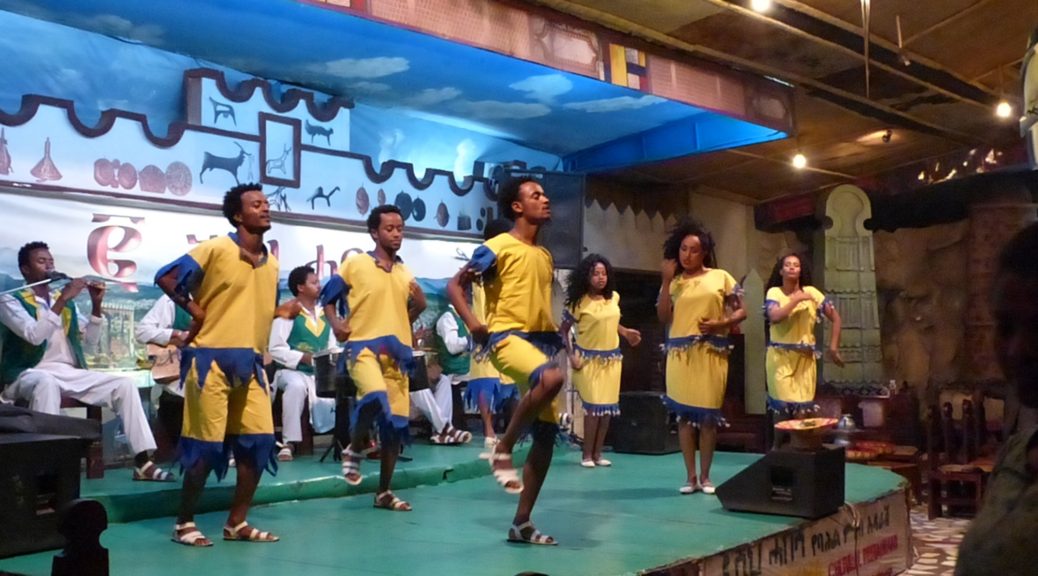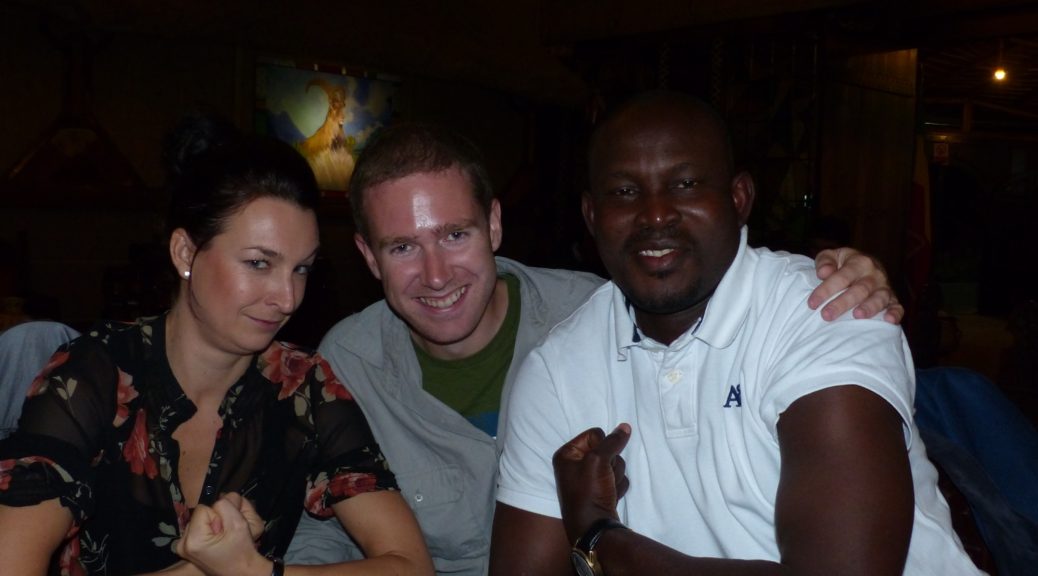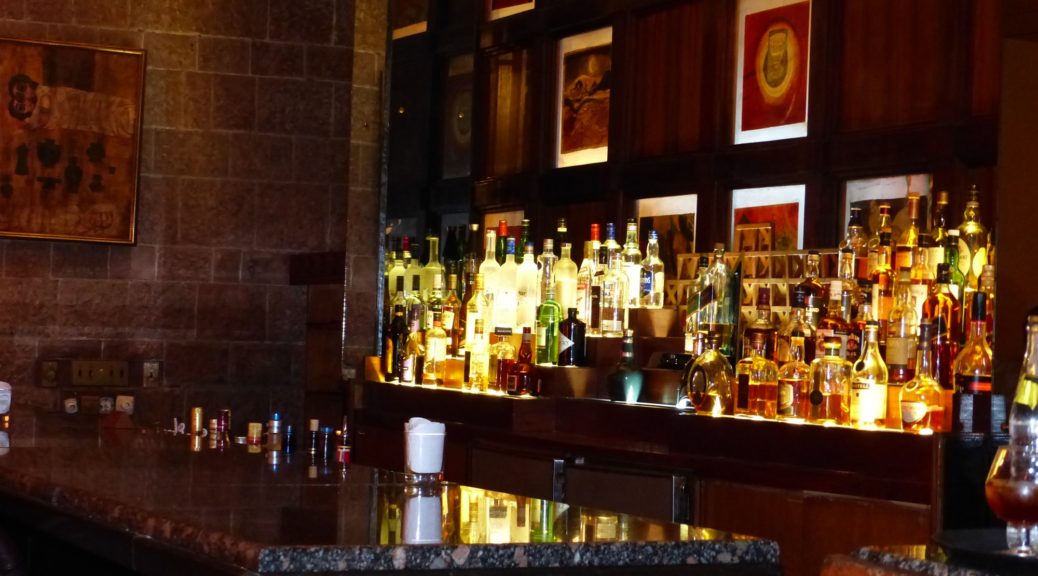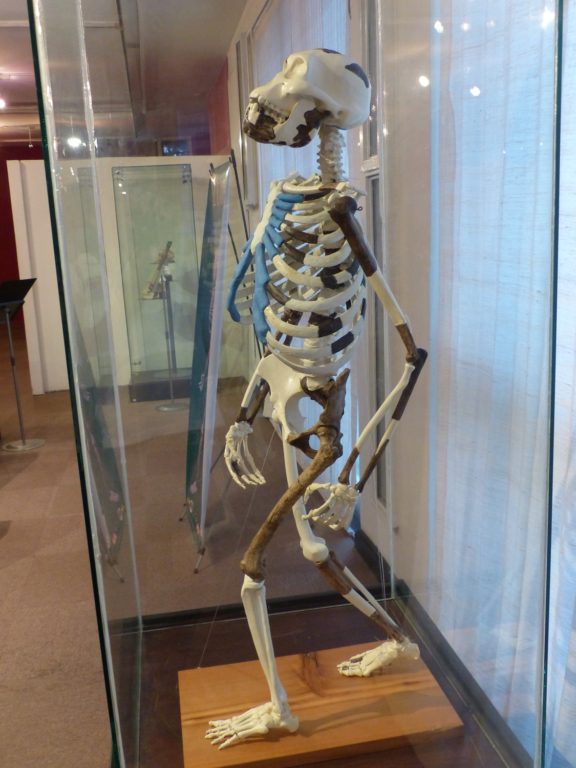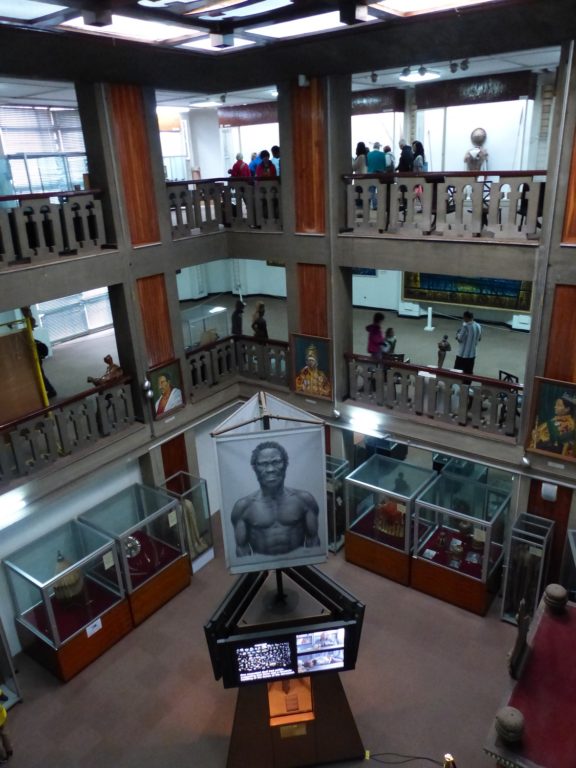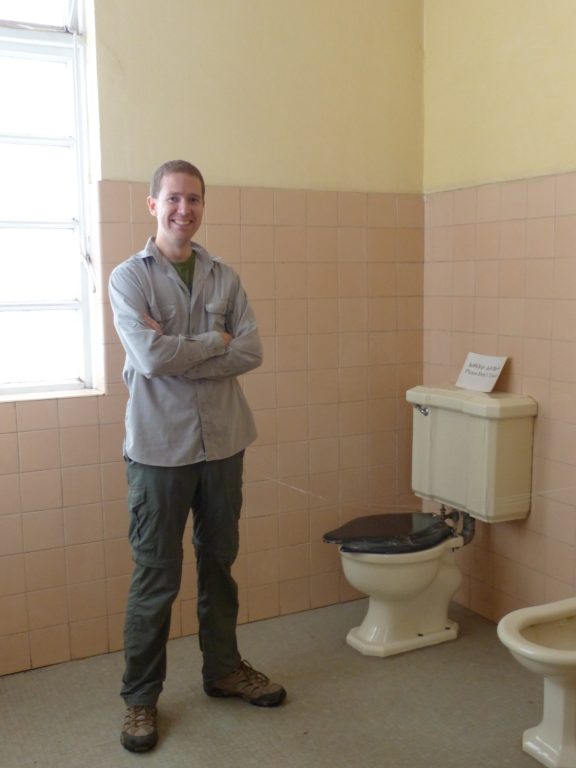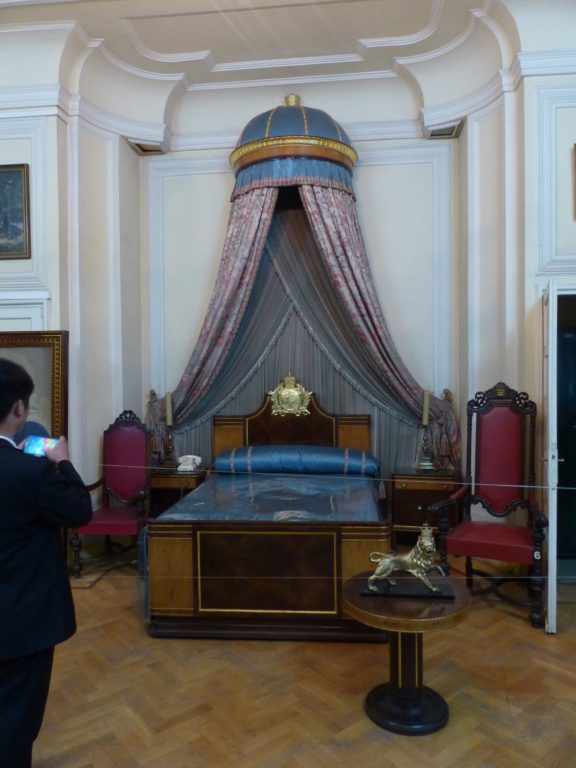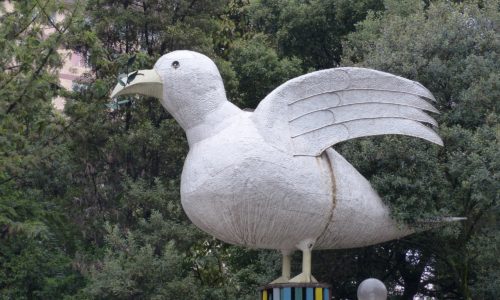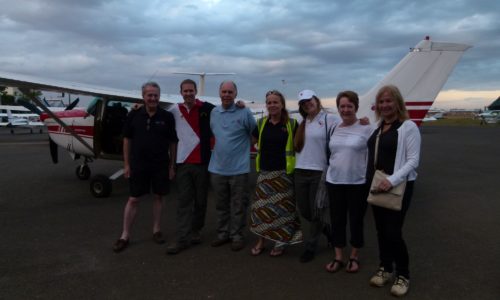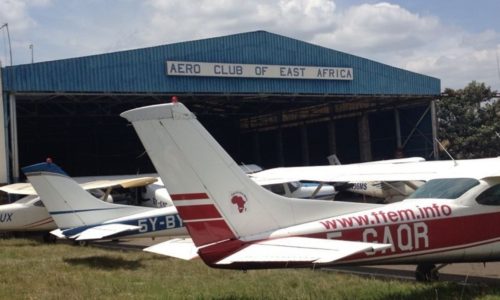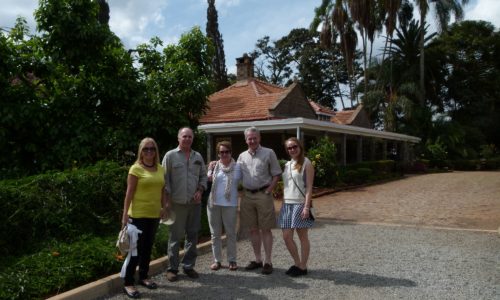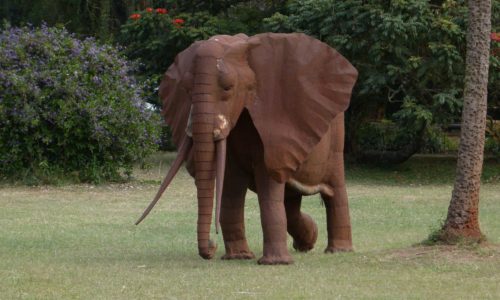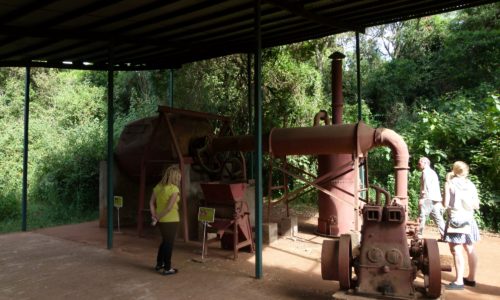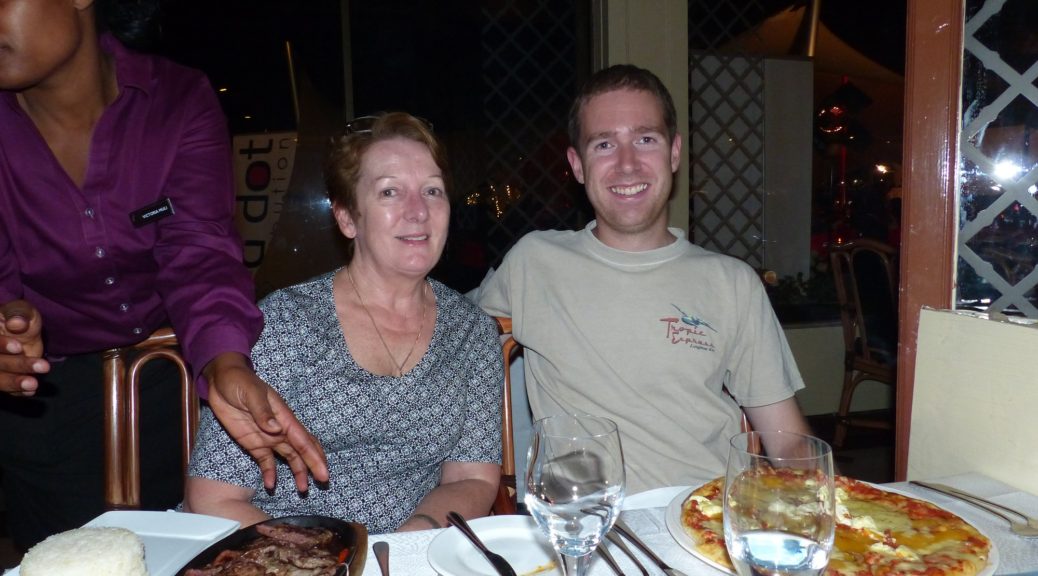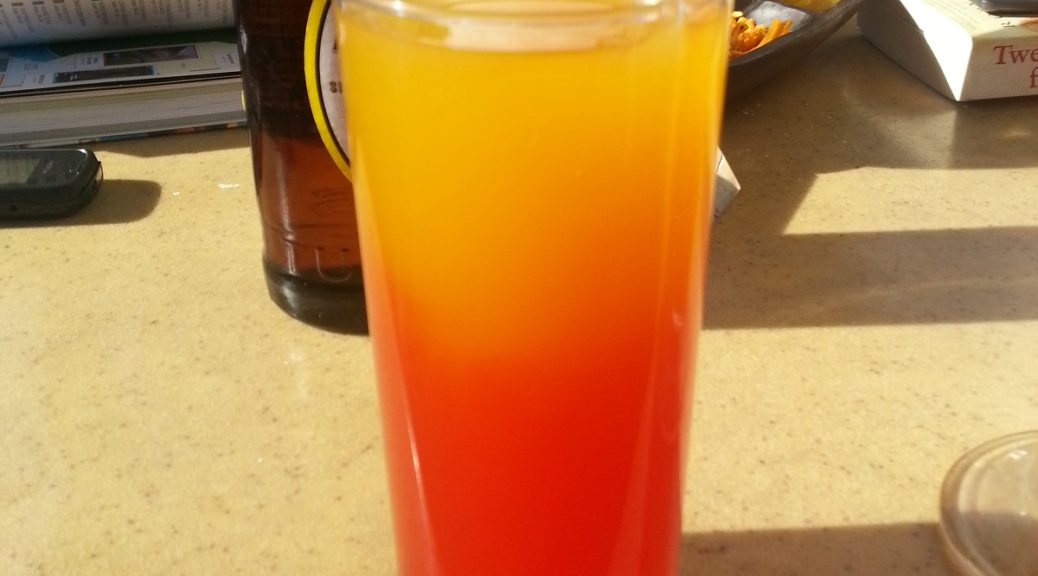Africa – Ethiopia to Kenya
My alarm went off just after 5. To try and avoid some of the fierce heat, and minimise the cooling problems associated with the aircraft’s engine, I wanted to be in the air by 7. The flight plan had been filed the day before, so the only task for the morning was to get through immigration and prepare the aircraft. Halla’s husband Osama drove us to the airport, arriving at 6, where Mohamed and his colleague were waiting to escort us through the terminal. This all went surprisingly smoothly and before too long we were on our bus being transferred to the aircraft. Some careful re-packing was required to fit in all the baggage and three people, but we managed it within the weight and balance limits of the aircraft. At two minutes past 7, we started up and headed to the runway; a brief wait while an airport car carried out a run to clear the birds, and we were off.
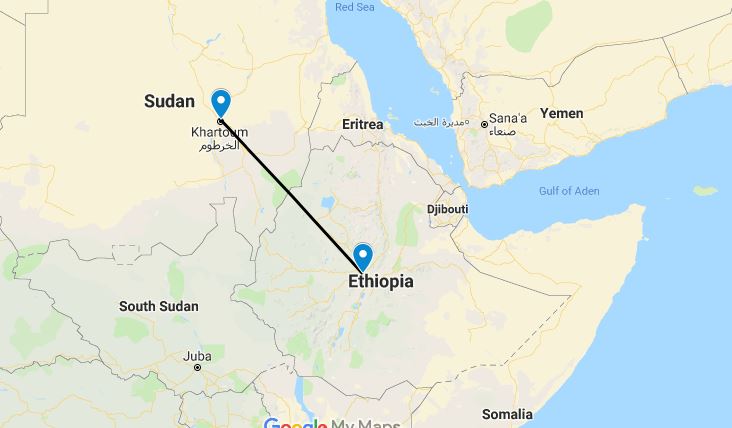
Despite the early hour it was still over 30 degrees. A very low power, shallow climb was required to keep engine temperatures under control. It was odd to think that, even twenty minutes into the flight, we were barely reaching the altitude of the airport at our destination of Addis Ababa. Eventually we reached our cruising altitude of 11,500ft and settled in for the five hour flight. We flew for a couple of hundred miles over surprisingly green country; as far as the eye could see was cultivated, with an effective network of irrigation supporting it.
Passing the Ethiopian border, the land began to rise. Mountains lay up ahead in places, with peaks that exceeded our maximum cruising altitude, so it was fairly important to stay on track. The weather cooperated, with scattered clouds meaning that we were in sight of the terrain at all time. The mountains made communication difficult, and it was not until we were within 40 miles of Addis Ababa that we were able to make contact with ATC. I was instantly put on my guard when the controller informed me on first contact to descend to 8,500ft. Given that the ground below us was at 8,600ft, and a ridge was up ahead that topped out above 10,000ft, I informed him that this was not going to be happening, explaining why; he acknowledged this, and told me to descend to an equally fatal 9,500ft instead. I resolved to ignore him.
The approach over the city was beautiful, with mountains all around. The airport stood at an elevation of 7,600ft, 800ft higher than I had ever landed before. The only real difference is a much higher ground speed at touchdown due to the thinner air, and the enormous runways at Addis take this into account. ATC continued to be entirely unhelpful, firing off instructions that bore no resemblance to international practice and were evidently only intelligible to local pilots who knew the unofficial local procedures. We landed just ahead of a light twin turboprop belonging to an operator based at the airport, and after parking and shutting down the South African pilots came over to say hello.
They were welcoming, and explained everything we’d need to know about getting through the airport. Their offer to give us a lift in their van was unfortunately refused by the local Ethiopian staff. We could not have a ride in their empty bus to the terminal, because local rules said only the official handling company was allowed to do that; and charge exorbitant amounts for it, naturally. We had to wait another twenty minutes before the crew bus from Ethiopian Airlines handling arrived and drove us to the terminal. It didn’t take long to make it through immigration and into the terminal where the girls located a welcome desk from the conference they were attending. I was left with the bags to head to the hotel for the evening; pilots were not invited to the conference or the reception at the British ambassadors residence that night.
When I woke it was raining steadily, and continued to do so for much of the day. That evening after the conference was finished Amie, Shruti and I went out to a traditional (but very touristy) Ethiopian restaurant with a few others from the conference. Ethiopian wine and champagne turned out to be surprisingly good, and the food was not at all bad, although rather spicy! Live music was being played on stage, with traditional dancing. During the meal, the band switched to playing some Chinese songs, much to the delight of the Chinese tour group; a couple of their more outgoing members got up and took the microphone to sing along.
After a slow morning of work, I set out to join Sophia in visiting a couple of the city’s museums. My journey got off to a slow start when I found that none of the ATMs near the hotel would give me any money. A Canadian intern, staying in Addis Ababa for a year, was also trying to get hold of some cash; she told me that this problem was fairly common and that she spent much of her time walking the city trying to find a machine that actually worked. I solved the problem by having the taxi driver take me to the Hilton on the way, where two of the five cash machines were at least functional. From there it was just a couple of minutes drive to the Ethiopian National Museum, where Sophia arrived a few minutes after I did. She had walked from her hotel, and her choice of flip-flops as footwear, combined with the wet weather, meant that the back of her trousers were entirely covered in mud flicked up by the shoes!
The museum was small, set out over three floors. Entry was very reasonable at about $1 per person. The ground floor contained historical artifacts (the usual pottery and jewelry) and, more interestingly, an exhibition of ancient human skeletons charting the course from apes to modern man. Taking pride of place was the famous “Lucy” skeleton, but there were plenty of other equally complete sets of bones from “Homo” specimens both newer and older. It was incredible how much information the scientists could determine from even the tiniest fractions of bone.
The second floor was a collection of Ethiopian artwork, of very varying quality, and on the third could be found a further variety of ancient Ethiopian artifacts. These included farming tools, furniture, and the like; but unfortunately nothing was labelled, limiting the interest that could be derived from the displays. The third floor also housed the gift shop, which Sophia was surprised to discover contained nothing in the way of “Lucy” related items!
From the National Museum, we walked up the hill to Addis Ababa University. We had been informed that we could see a cultural museum here. We wandered through the grounds in search of the right building; the gardens had evidently once been attractive and well manicured but were now in a state of neglect. Finding the correct building, we paid our entry fees (15 times more than the national museum) and made our way up the stairs to the top floor. Given that closing time was not far off, we asked what we should prioritise, and were informed that Haile Selassi’s bedroom was the main attraction. We dutifully traipsed through to look; for an Emperor, his decorations had been surprisingly low quality. The fittings, and indeed building (he had donated it to the University having used to live there) were finished to the usual low standard of workmanship that we’d seen through the entire continent.
The rest of the museum was much better, including a large feature about the different tribes of Ethiopia, where they lived, and their customs and practices. A section of artwork was, like that in the National Museum, uninspiring; the things that really did stand out were the beautiful and elaborate crosses produced by Ethiopian artisans.
Museums finished with, we walked for 45 minutes to the Hilton, where the conference had been held. They had an excellent pizza restaurant which we decided to eat at, being a little starved of Western cuisine. Shruti, who had now recovered from the illness that had kept her confined to her room, turned up to eat with us, accompanied by a local doctor who had taken quite a shine to her and was now doing his best to monopolise her for the remainder of her stay! Dinner finished with, we managed to escape from the keen doctor and head back to our hotel.
For our last day in Ethiopia, Sophia and Shruti went off on a couple of hospital visits. That evening, a medical colleague of theirs took us to another hotel in the city, which had a Jazz bar attached. Being a Monday it was fairly empty, so we could sit right at the front and enjoy excellent food and drink while watching the band. The music was fantastic; we were sorry we hadn’t tried this earlier! When the set finally finished, Sophia and Shruti got talking to a couple of the musicians; it wasn’t long before Sophia was planning their European tour for them.
We left the hotel at 0800 and took the shuttle to the airport. Ethiopian Airlines, our handling agent, had been failing to answer their phone so we simply turned up at departures and attempted to track them down. It took a good half hour before the right person turned up, and this unfortunately set the tone for our passage through the airport; they were inefficient, unhelpful, and downright rude. Without a doubt the worst handling we’d had, and given the terrible performance of Skywatch in Nigeria, this took quite some doing!
Continuing the theme of African aviation companies refusing to use their own country’s currency, Ethiopian were adamant that they would only accept payment in US dollars, cash. We argued this for quite some time, pointing out that if we wanted to buy a ticket on their airline we could do so right there with a credit card or local currency. Eventually a compromise was reached, and they suddenly agreed to accept either card or local cash for the handling fee; yet another example of people being needlessly obstructive when the simple solution was in fact possible all along. The same occurred for the airport fees, which had to be in dollars; the airport bank refused to change any other currency into dollars unless we had a boarding pass. Our status as a private flight was too confusing for them, and they refused to do anything. Returning to the same back 15 minutes later, suddenly we could change money with no problem. No wonder it’s impossible to get anything done in these places!

Working our way through the airport, once the currency issue was sorted out, was similarly tedious. It took the lady from the airport authority a good half hour simply to write out a 5 line receipt by hand. Thankfully the fuelers, once we reached the aircraft, were quick and efficient; a welcome relief from the rest of the airport! Finally, with much relief, we were on our way. With almost full fuel, three people, and baggage, the aircraft was loaded up to its maximum takeoff weight; and the thin air at 8,600ft greatly decreased performance! Nonetheless, taking full advantage of the huge runway we slowly climbed away and headed south.
One advantage of the delay in the airport was that the weather had improved, and the sky was now full of scattered cumulus cloud rather than the overcast that had been present earlier. Given that we’d be flying south at levels well below the tops of the highest mountains, being able to see was a huge bonus. Thankfully this time ATC said very little to us, limiting their chances to foul things up, and before too long we were out of VHF contact with them and well on our way. The route took us down a valley leading away from Abbis, with mountain ridges either side and the occasional huge lake; apparently Ethiopia is known as the water tower of Africa for its high setting and huge water supplies.
We continued to be out of radio contact for the next four hours, which was lovely. Peace and quiet in which to do our own thing! We carried on along the flight planned route and the ground slowly dropped away below us, with the mountain peaks slowly turning into hills. Signs of human habitation were few and far between; the south of Ethiopia and north of Kenya were almost devoid of observable occupation. Occasionally we’d slog through cloud for 20 minutes or so, but on the whole the weather was good; certainly much better than the constant, thick cloud around the west coast!
As we neared Nairobi, the countryside changed dramatically. Flying over the hills well to the north, it was almost like we’d suddenly appeared back over the English countryside. Scattered farms littered the green landscape, with hedgerows dividing the mechanically tilled fields; we’d not seen anywhere that looked like it was cultivated mechanically since we’d been in Europe. The countryside looked cool and inviting, nothing like the jungles and deserts that we had seen so far, and it was easy to see why it had been so attractive to English settlers. The infrastructure here looked far superior to most countries we’d seen so far, with well constructed highways, and even railways; the driving however looked like it was still at a rather scary and dangerous level.
We had by now contacted Nairobi Centre, and they turned us over to the tower at Nairobi Wilson, a GA airport in close proximity to the main Jomo Kenyatta International. I have never heard such a busy airport; it was almost impossible to get a word in on frequency, and a mixture of light aircraft (predominantly Cessna Caravans) were being lined up 4 or 5 deep on final approach. Once tower heard that we were not familiar with the locally used reporting points (not marked on our charts, of course!) we were turfed straight back to approach for them to deal with us.
It turned out that the way to deal with clueless newcomers was to vector them onto the ILS approach into Jomo Kenyatta International. Halfway down, we were instructed to break off to the left and enter a right downwind for runway 07 at Wilson. Changing back over to tower, they were able to deal with us this time, and we were placed number four for landing behind a Cessna Caravan. Moments later we had touched down, and were scrambling to clear the runway ahead of the non-stop stream of traffic coming in behind.
As we taxied in, we caught a glimpse of 5 people jumping up and down and waving wildly from the fence. Our families had arrived! Reunion was slightly delayed by the need to taxi to customs and immigration, which was made slower still by the fact that the ground controller seemed to be in training and not sure what she was doing; trying to instruct a visiting, unfamiliar aircraft seemed to be all too much for her. Paperwork completed we taxied back to the Aero Club of East Africa where we’d be spending the next week, and met our families again for the first time in more than two months!
That evening we dined in the Aero Club restaurant; given the amount of time we’d be spending there we were pleased to find out that there was a large menu of excellent dishes!
On Wednesday I set out to organise the maintenance that needed to be carried out on the aircraft. The owner had instructed us to visit Phoenix Aviation, where they would be ready to receive us and carry out the necessary checks. On my first visit our contact was not there; returning as instructed a couple of hours later, I found that he was in meetings and ended up having to wait more than an hour. When I eventually got to see him, he could not have been more pleasant and welcoming. The request to take in the aircraft and carry out the work had apparently only been made the day before, so they were not exactly prepared for us; and as it turned out, their mechanic did not have the required European licence to perform the inspections. Of course, it took another visit that afternoon to the engineer before I found this out, wiping out the rest of the day; the others had all gone sightseeing!
Thursday was a quiet day. After a morning conference with the chief engineer at Phoenix, it was decided that the best course of action would be to fly an engineer out to Nairobi from the maintenance organisation in Holland to take care of the required inspection and try and fix the electrical problems once and for all. The aircraft owner was extremely quick to organise this, and managed to find some reasonably priced last minute flights. The engineer, then, would arrive in Nairobi late on Saturday night.
That evening the party met up at the Intercontinental hotel, where my parents were staying, to spend an afternoon by the pool. The hotel boasted the “largest screen in Kenya”, which turned out to be mounted on one end of the building and primarily used for showing football matches. After enjoying cocktails on the terrace (my “Crocodile in the Sky” was a new drink to me, but quite passable) we had dinner in the main hotel restaurant; very disappointing! The Aero Club turned out to be far superior in terms of cuisine.
Friday was a day of catching up. Sophia once again spent time at the main hospital in Nairobi, while much of the rest of the Webster family were put to work bringing the project’s accounts up to date! They took to this thankless task willingly and with good humour.

In the afternoon, my parents and I decided to go out for some sightseeing. Destination of choice was the nearby giraffe sanctuary. We had, however, reckoned without the infamous Nairobi traffic. After an hour and a half in the taxi, having made no more than a couple of miles progress towards our goal, we gave up and returned to the Aero Club; the return journey, where traffic flowed freely, took no more than 7 or 8 minutes. After a catch-up with the Websters, and collection of my luggage, we made for the Intercontinental where I’d be spending the next few nights. It would be good to have a few days away from airports and airplanes! The hotel’s second restaurant, and Indian, turned out to be one of the best we’d ever sampled. Thoroughly recommended on any stop in Nairobi!
Apparently, weekend traffic in Nairobi is not as bad as it is during the week. Putting this to the test, we set out from the hotel reasonably early to visit Nairobi National Park, over which we had flown when arriving at Wilson. The traffic was indeed much better; we averaged more of a bicycle pace than a walking one, and got to the park in reasonable time. We parked near the gate for the driver/safari guide to reconfigure the van for safari; the entire roof raised up so that one could stand up and look out freely at the animals.
Entering the park, it was like the nearby city of Nairobi had faded away. We drove through dense forest for a few kilometres before breaking out onto the plains. In one direction the tall buildings of Nairobi were visible in the background; in the other, one could quite easily imagine that you were in the middle of the Serengeti. It was only minutes before we came across our first animals; a small herd of antelope type animals named Eland. The drive continued in this fashion and before the afternoon was out we had seen a multitude of various types of antelope and gazelle, zebra, ostriches, giraffes, rhinos, a hippo, baboons, and even two lions! Quite amazing, just a handful of miles from the bustling capital city.
Click here to read the next part of the story.










